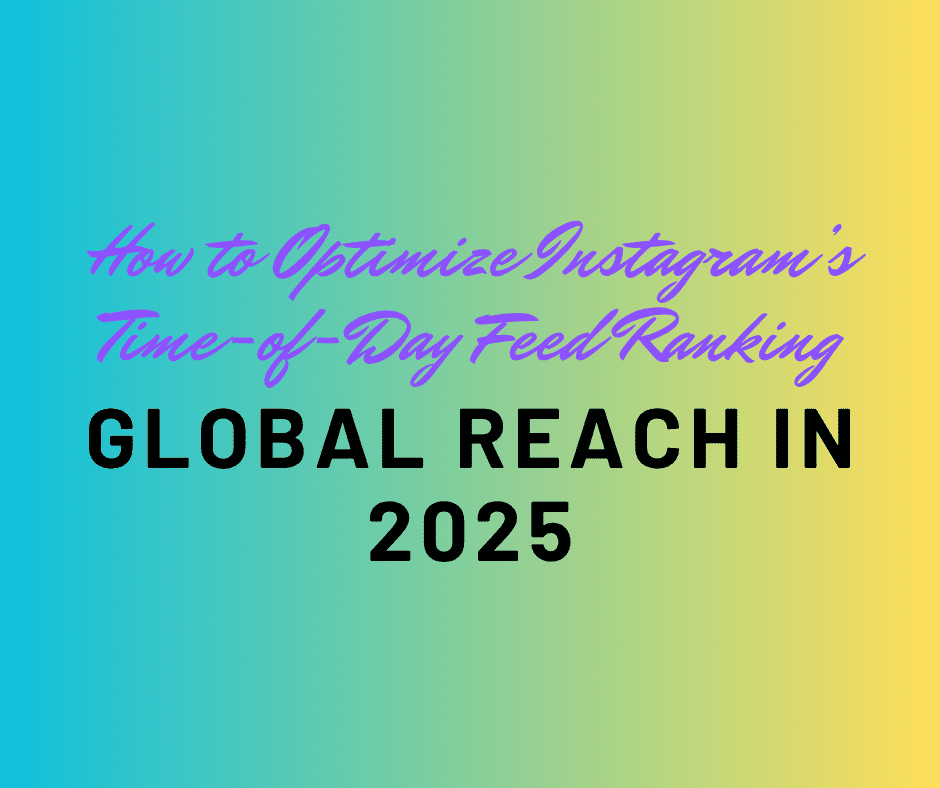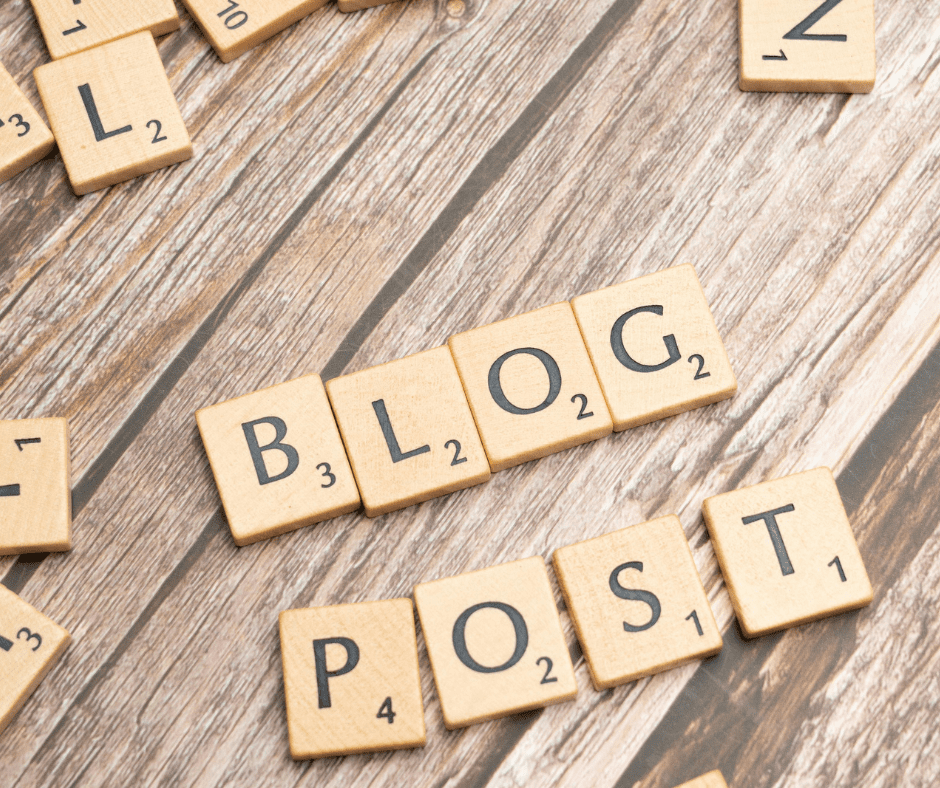Last Updated on May 13, 2025 by Val Razo
In 2025, the evolution of Instagram’s algorithm has made timing more critical than ever for creators, brands, and businesses aiming to reach a wider audience. Whether you’re posting Instagram Reels, Instagram Stories, or a traditional Instagram post, understanding the best time to post is no longer just about audience activity — it’s about how the algorithm recognizes and rewards engagement and reach. The Instagram feed algorithm now considers various Instagram metrics, including the time users spend viewing, the type of content, and how often they interact with your Instagram content.
To beat the Instagram algorithm, it’s essential to understand how the algorithm works, how it reacts to posting time, and what Instagram analytics reveal about optimal times to post. Whether you’re managing a personal brand or an Instagram business account, using Instagram insights and understanding algorithm changes will help you craft a strategy that improves your ranking and boosts your Instagram reach.
This guide will explore everything from how the algorithm uses signals, to best practices and tools for social media management, giving you the edge to succeed on Instagram in 2025.
Understanding the Instagram Algorithm in 2025
The Instagram algorithm in 2025 is smarter, faster, and more nuanced than ever before. Its primary goal remains unchanged: to keep Instagram users engaged by showing them the most relevant content. But the way it determines relevance has evolved significantly. To improve your reach, it’s essential to understand how the algorithm works, especially when considering the time to post on Instagram.
Key Instagram Algorithm Ranking Factors
In 2025, Instagram’s algorithm evaluates a mix of metrics and behavioral signals to determine the order of content in the Instagram feed. These include:
-
Engagement metrics: likes, shares, comments, and saves
-
Watch time for videos on Instagram and Instagram Reels
-
Time spent on posts
-
Profile interactions (e.g., visiting someone’s profile after viewing a post)
-
Frequency and recency of content
Additionally, algorithm ranking factors are now tailored to user habits across social media platforms, meaning that Instagram analytics tools must account for both broad and niche behaviors.
The average Instagram engagement rate for business accounts dropped to 0.62% in 2025, compared to 0.71% in 2024 — highlighting the increased competition and importance of timing and content type.
Notable Instagram Algorithm Changes from 2024 to 2025
One of the most impactful algorithm changes is the emphasis on timing. The algorithm update introduced in early 2025 prioritizes content that aligns with user activity windows — meaning the best time to post can dramatically influence a post’s reach and engagement.
Other notable updates include:
-
Boosted exposure for new types of content (like collaborative carousel reels)
-
Increased weight on Instagram captions that spark conversations
-
Advanced use of AI to detect and boost high-performing Instagram content within the first 30 minutes of posting
Compared to 2024 Instagram, today’s system responds faster to strong performance indicators, allowing well-timed posts to gain momentum rapidly — or fizzle out if poorly timed.
How the Instagram Algorithm Works Across Time Zones
For users targeting a global audience, the posting time must be strategic. Instagram’s algorithm doesn’t yet offer automatic localization per region, so one Instagram post is ranked the same way globally. However, if your audience spans multiple time zones, staggering your posts or scheduling for your audience’s peak hours is crucial. You can use Instagram analytics or third-party social media management tools to determine the optimal times to post for different regions.
Brands and influencers should consider:
-
Running A/B tests using Instagram insights
-
Reviewing metrics like reach segmented by location
-
Using tools to schedule Instagram posts around the right time to post for each major region
When you understand how the algorithm recognizes time-sensitive engagement, it becomes easier to hack the algorithm and grow your Instagram presence worldwide.
When I started experimenting with my posting schedule in 2025, I realized I had been missing out on engagement simply by posting too late in the day. By shifting to an 8:30 AM slot — based on what Instagram Insights showed about my followers — my reach literally doubled in a week.
Why Timing Matters: Metrics That Influence Instagram Reach
If you’re trying to increase the reach of your posts on Instagram, knowing the right time to post isn’t optional — it’s a strategic necessity. With the 2025 Instagram algorithm giving more weight to engagement on Instagram within the first 30–60 minutes, your posting time directly affects how well your content performs. Simply put, when you post can be just as important as what you post.
Engagement Metrics and Their Impact on Ranking
The algorithm evaluates specific Instagram metrics immediately after your content goes live. Here are the most influential:
-
Likes per reach: The percentage of users who liked your post versus how many saw it.
-
Saves and shares: Strong indicators of quality content.
-
Comments per impression: More comments signal better relevance.
-
Time spent viewing: One of the most heavily weighted metrics in 2025.
Using Instagram analytics helps identify patterns in your own Instagram account that correlate with high engagement. These metrics like reach provide clarity on what works best for your audience — and when.
Best vs Worst Time to Post on Instagram
There is no one-size-fits-all best time to post, but data shows that early weekday mornings and late evenings often generate higher engagement. However, you must consider your niche, location, and target demographics.
Best days to post (generally):
-
Tuesday, Wednesday, and Thursday
-
8 AM–10 AM or 6 PM–8 PM in your audience’s time zone
Worst times to post:
-
Sunday evenings
-
Midday on Saturdays
-
During commute hours in local time zones
You can use Instagram insights and analytics tools to determine the optimal times to post based on your followers’ behavior.
Posts published during global peak times (8 AM–10 AM local time) saw a 29% higher reach and 23% more saves than those posted during off-hours, according to a study analyzing over 1 million posts.
How Reels, Stories, and Posts Are Prioritized Differently
Each content format has its own spot in the Instagram algorithm ranking factors:
-
Instagram Reels benefit most from quick likes, shares, and full watch times. The reels algorithm also prioritizes fresh trends and audio.
-
Instagram Stories are evaluated by tap-forward/tap-back rates, exit rates, and response DMs.
-
Instagram posts in the feed are influenced by comments, saves, and overall engagement speed.
To beat the Instagram algorithm, your timing must align with the type of content you’re sharing. For example, posting on Instagram Reels in the evening might boost reach, while feed posts perform better in the morning. Diversify your strategy accordingly.
Global Posting Strategies to Improve Your Instagram Reach
As Instagram continues to grow across international markets, your posting time must account for a global audience if you want to reach a wider audience and increase Instagram engagement. Whether you’re running an Instagram business account or creating content as a solo Instagram creator, timing your posts for various regions can dramatically improve your visibility.
Scheduling Content for Global Audiences
One of the smartest ways to optimize your posting strategy in 2025 is to schedule Instagram posts based on your top audience locations. Instead of relying on one universal time slot, stagger your Instagram content to appear when each segment of your audience is most active.
Steps to follow:
-
Use Instagram analytics metrics to identify where your followers are located
-
Determine when followers in each time zone are most active
-
Create separate content queues for morning and evening posts in those regions
Using third-party social media management platforms like Buffer, Later, or Hootsuite allows you to automate this process with precision and consistency.
Using Time Zone Data to Optimize Post Timing
Analyzing Instagram insights by location helps you determine peak activity hours for your target audience. For example:
-
U.S. and Canada: 6–9 AM local time (before work hours)
-
Europe: 11 AM–1 PM local time (lunch break window)
-
Southeast Asia: 7–9 PM local time (evening browsing time)
Once you’ve mapped out peak hours, rotate your Instagram posts, Stories, and Reels to hit each region at the right time to post. This not only boosts your reach and engagement but sends positive signals to the Instagram algorithm, increasing the likelihood of being recommended.
As someone managing a small brand account, I used to rely on random timing. But after tracking my metrics, I began posting Reels at 6 PM and carousels at 9 AM. It wasn’t long before I noticed a significant uptick in comments and shares — timing was the missing puzzle piece.
Tools for Social Media Management and Automation
Manually managing global schedules can be difficult, especially if you’re juggling multiple content formats. That’s where Instagram analytics tools and scheduling software help.
Top tools in 2025:
-
Later – best for visual planning and smart posting recommendations
-
Hootsuite – ideal for teams managing multiple Insta accounts
-
Metricool – excellent for tracking real-time performance and Instagram metrics
These tools also help you track the algorithm’s response to different posting times, so you can continually refine and adjust your approach.
By leveraging these global strategies, you’re not just posting — you’re targeting. And when it comes to Instagram marketing, that’s how you rise above the noise and build a truly international presence.
Proven Tactics to Beat the Instagram Algorithm in 2025
In a crowded digital landscape, creators and brands alike are constantly searching for ways to beat the Instagram algorithm. As the platform becomes more advanced, success depends not only on what you post but on how and when you do it. By following proven strategies tailored to the 2025 Instagram algorithm, you can consistently boost your ranking, engagement, and overall Instagram reach.
Best Practices for Maximizing Engagement
To gain traction, your content must send the right signals to the Instagram algorithm quickly. Here’s what works in 2025:
-
Post high-quality visuals with scroll-stopping captions
-
Use Instagram hashtags that are niche but relevant
-
Encourage comments with direct calls-to-action
-
Post at the optimal times to post, based on analytics
-
Keep Stories active daily to stay top-of-mind
These best practices help the algorithm for Instagram detect value early — increasing the chance that your post gets pushed to more users.
Content-Type Optimization: Reels, Stories, Feed
Each content format requires a slightly different strategy:
-
Instagram Reels: Hook users in the first 3 seconds, use trending audio, and add captions for silent viewing. This boosts retention, a key metric the reels algorithm prioritizes.
-
Instagram Stories: Post consistently throughout the day. Add polls, stickers, and reply options to drive interaction.
-
Instagram feed posts: Use carousel formats when possible. These increase time spent viewing and offer more touchpoints for engagement.
Balancing all three formats strengthens your presence across the platform and shows the Instagram algorithm that your account is active and versatile.
Mistakes to Avoid When Posting
Avoiding these common errors can be just as important as implementing strategy:
-
Posting during the worst time to post (e.g., middle of the night or inactive user hours)
-
Ignoring Instagram analytics and blindly posting
-
Failing to adapt after an algorithm update
-
Using banned or irrelevant hashtags
-
Overposting — which can lead to content fatigue
Each mistake weakens your content’s impact and decreases its engagement and reach, signaling to the Instagram algorithm that your post may not be worth showing to others.
With the right blend of data-driven posting, creative consistency, and timing, you’ll not only hack the algorithm — you’ll dominate it.
Conclusion
In the competitive world of Instagram in 2025, knowing the best time to post is no longer a minor detail — it’s a critical component of success. With the evolving Instagram algorithm, timing, content format, and strategic engagement all work together to determine your content’s reach and engagement. By understanding how the algorithm works, monitoring your Instagram analytics, and applying data-driven posting strategies, you can consistently improve your reach and beat the Instagram algorithm.
Whether you manage a brand or a personal Instagram account, the tools and insights are available — it’s up to you to put them to work. Mastering the right time to post, tailoring content by format, and leveraging global scheduling can help you unlock the full power of your Instagram presence in 2025.
Frequently Asked Questions
How Often Should You Post on Instagram in 2025?
Posting frequency plays a role in maintaining visibility, but quality trumps quantity. For most creators and businesses, posting 3–5 times per week — across a mix of Reels, Stories, and feed posts — strikes the right balance. Consistency is more important than high volume.
Do Instagram Captions Influence Algorithm Ranking?
Yes. In 2025, Instagram’s algorithm uses natural language processing (NLP) to evaluate captions. Posts with thoughtful captions that encourage comments, questions, or shares can increase time spent on a post — a key ranking signal.
What Role Do Saved Posts Play in Reach?
Saves are one of the most powerful Instagram metrics right now. When users save your content, it signals to the algorithm that your post is valuable long-term — often leading to extended distribution in Explore and feed recommendations.
How Does the Algorithm Treat New Instagram Accounts?
New Instagram accounts experience a temporary “discovery boost,” where their posts are tested across small audiences to evaluate content quality. High-performing posts during this phase can fast-track early Instagram reach growth, so timing and content matter more than ever.
Can Posting Too Often Hurt Your Engagement?
Yes, overposting without a clear strategy can lead to follower fatigue, lower engagement rates, and poor performance signals. The algorithm may respond by throttling visibility. It’s best to monitor Instagram analytics and allow your audience time to engage before pushing out more content.
Author Bio
Val Razo
Val Razo is a skilled professional in the field of Instagram Marketing. With over five years of experience as a freelance Social Media Marketing consultant, Val has assisted numerous small and medium-sized businesses in achieving their goals.





